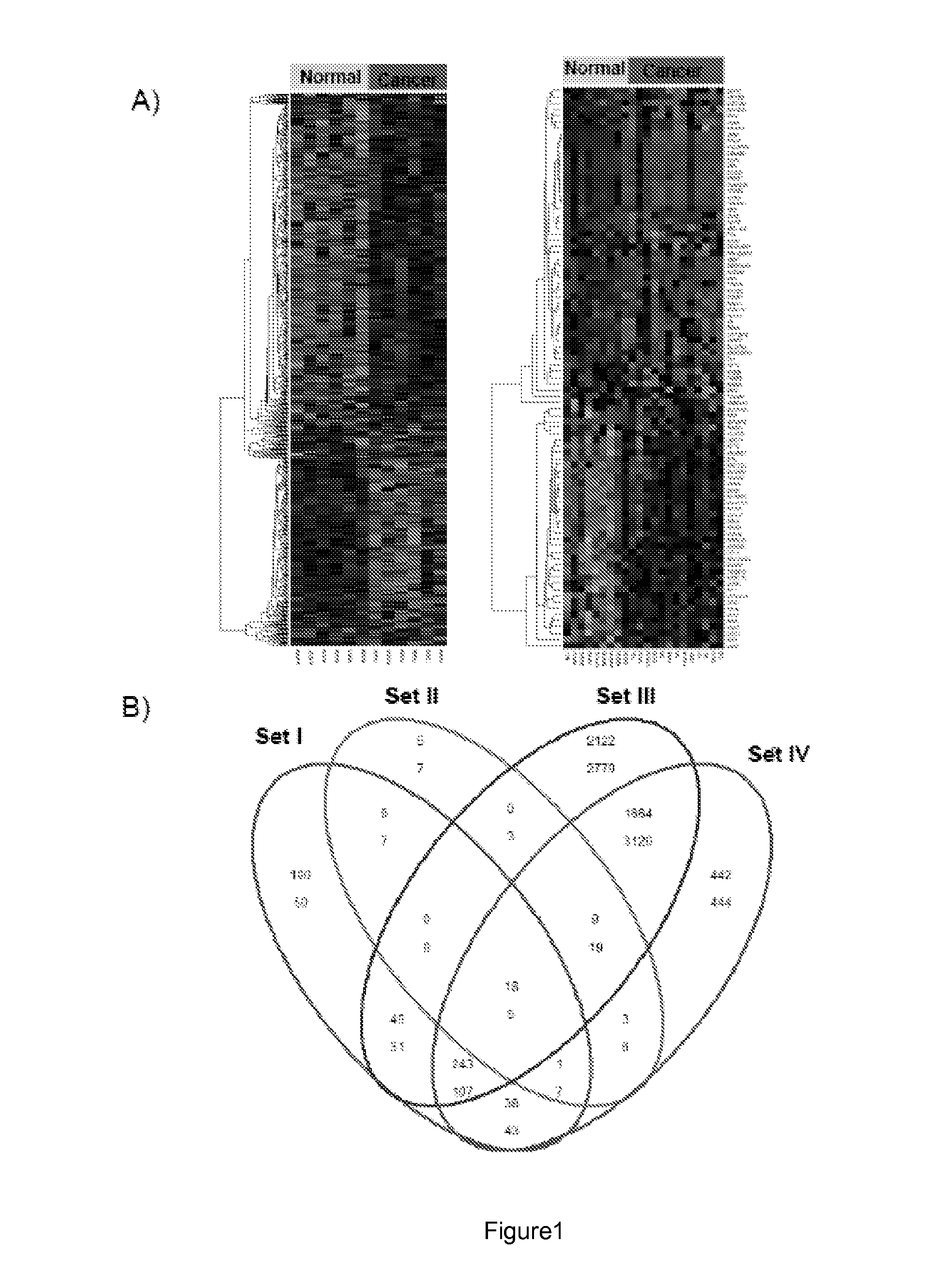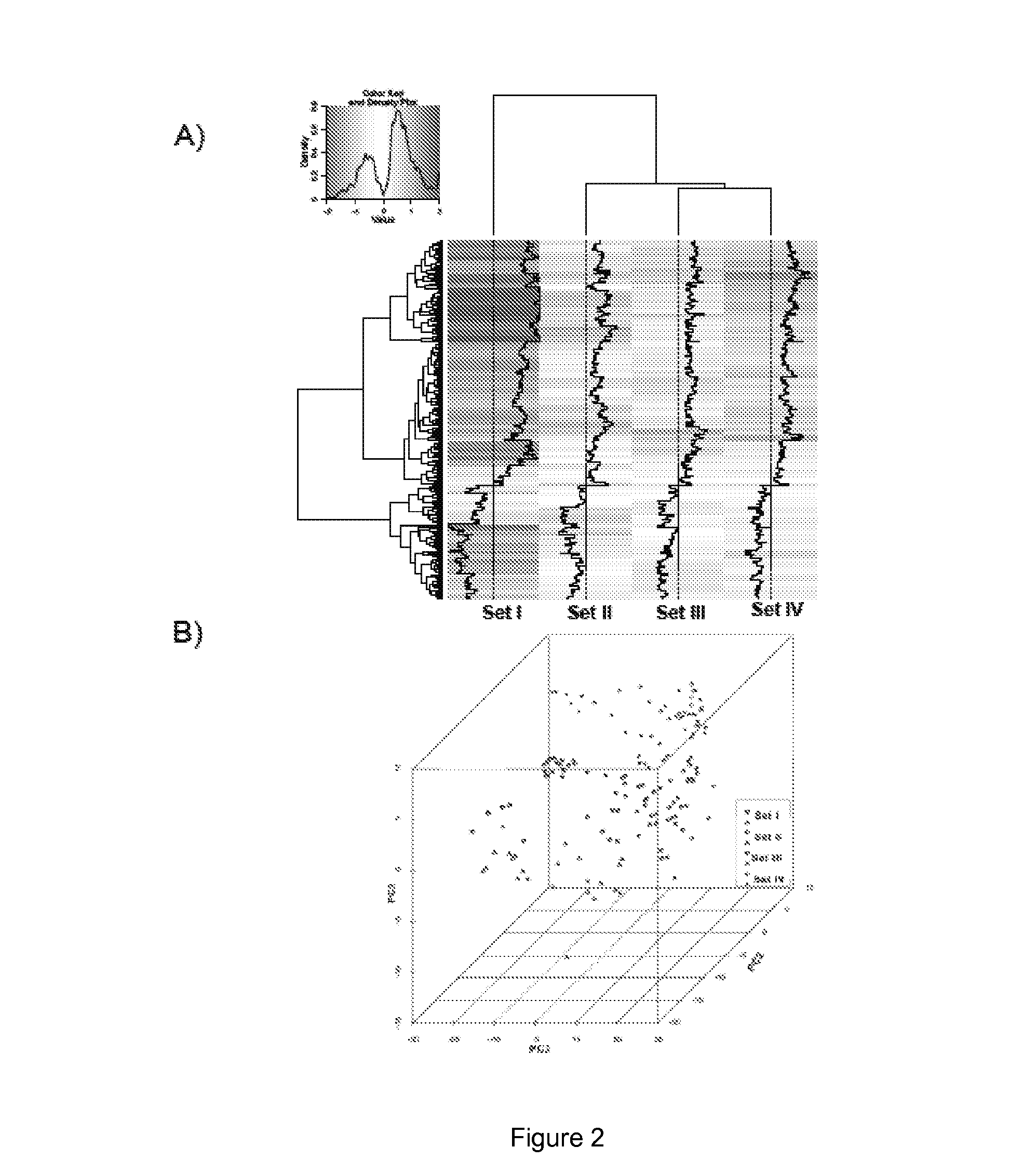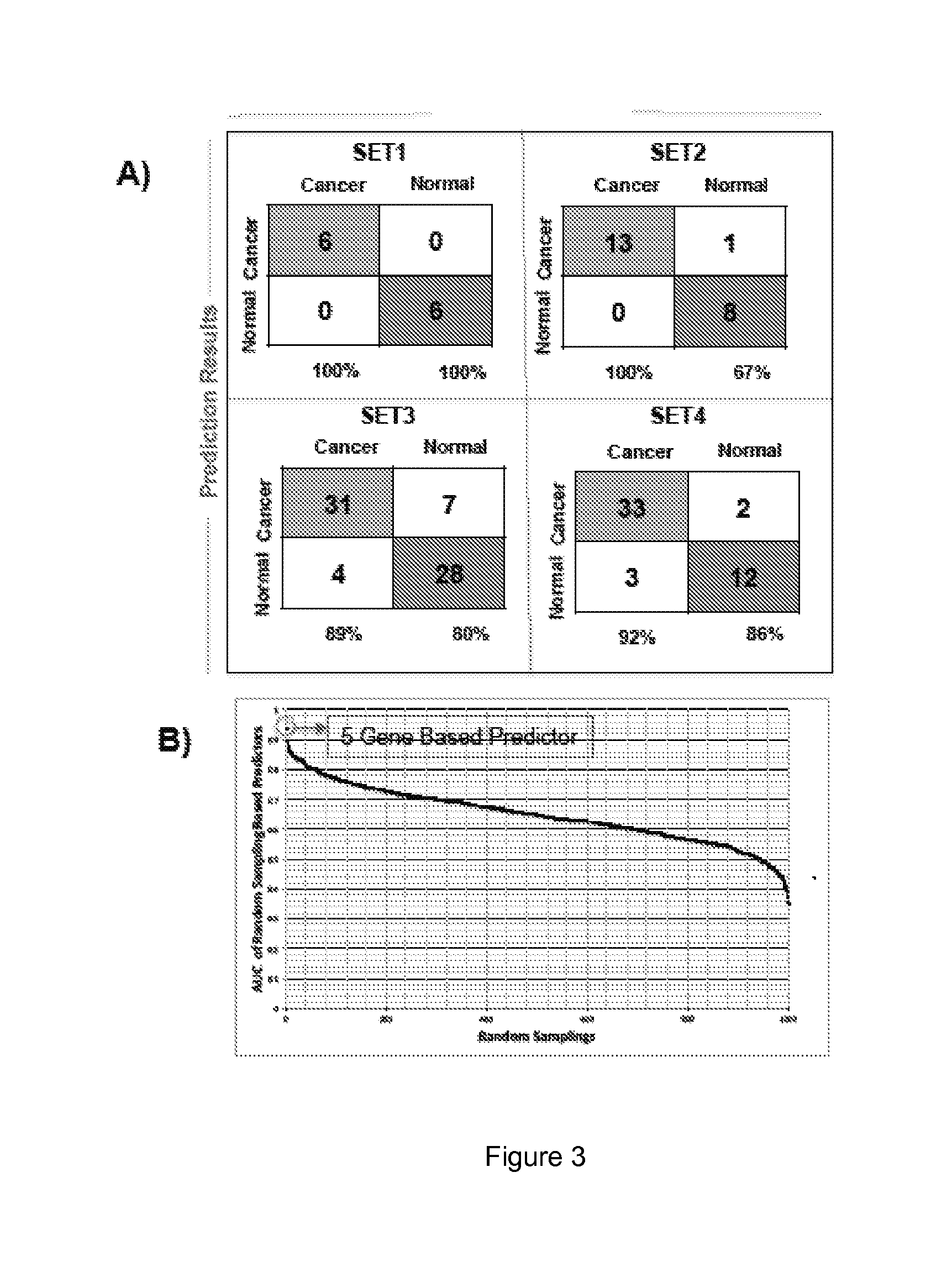Methods and kits for the diagnosis and treatment of pancreatic cancer
a pancreatic cancer and kit technology, applied in the field of pancreatic cancer diagnosis and treatment, can solve the problems of inability to validate the biomarkers that distinguish benign pancreatic lesions, complicated pdac diagnosis, limitations of imaging and histopathology, etc., to accurately diagnose pdac and determine the likelihood of developing pdac
- Summary
- Abstract
- Description
- Claims
- Application Information
AI Technical Summary
Benefits of technology
Problems solved by technology
Method used
Image
Examples
example 1
Identification of Biomarkers
[0184]A search of the literature and publicly available microarray repositories identified four training datasets with evaluation of normal pancreas tissue and PDAC samples (Table 1). In addition, five validation datasets from public databases or literature were identified for testing the performance of the optimized biomarker panel on independent datasets and four additional datasets were collected for prospective validation (Table 1). All datasets utilized oligonucleotide-based microarray platforms, with eight studies using one of three versions of Affymetrix GeneChip arrays, and one study using Agilent-based microarrays. The independent validation datasets evaluated i) PDAC versus normal, ii) PDAC versus other tumors (e.g. breast, colon, liver, lung, and prostate), iii) PDAC versus chronic pancreatitis, and iv) normal versus pre-malignant pancreas lesion (intraductal papillary-mucinous neoplasm ([IPMN]) versus invasive cancer originating in intraductal...
example 2
Class Prediction Analysis in the Four Training Sets
[0187]Class prediction analysis generated a large number of PDAC classifiers containing two to 40 genes each. Based on LOOCV evaluation in the training sets, classifiers containing five or ten genes performed with highest accuracy. The gene list for the 5- and 10-gene classifiers in the training sets is shown in Table 2. LOOCV of the 5-gene predictor with each of the four training datasets demonstrated good performance for each dataset individually with sensitivity ranging from 0.89-1.0 and specificity from 0.67-1.00 (FIG. 3A) resulting in a median area under the ROC curve (AUC) of 0.93 (FIG. 3B). The AUC plot in FIG. 3C depicts the threshold independent performance of this predictor. Hierarchical clustering of either the 5-gene or 10-gene classifiers (FIG. 4) demonstrates the relative differential expression of these genes in the four training sets and clearly shows that both classifiers separate the microdissected as well whole ti...
example 3
The 5-Gene PDAC Classifier Predicts PDAC with High Accuracy in 9 Independent Validation Sets
[0189]The 5-gene based classifier had the highest accuracy in the independent test sets when compared to biomarkers containing 10 genes (FIG. 6A). This classifier consists of 5 upregulated genes. The 5-gene classifier accurately predicted the class of PDAC samples, corresponding to a sensitivity of 96% and 88.89% and a specificity of 85.7% and 86.67%, respectively in two independent validation sets that contained PDAC and normal pancreas samples, which is significantly better than CA19-9, and exhibited a specificity of 85.7% and 86.67% respectively. The AUC for these two datasets reached 0.9 and 0.8778. In two datasets containing exclusively PDAC samples a sensitivity of 97.22% and 94.5% was achieved and in a dataset containing 145 normal samples a specificity of 96.5% was determined.
[0190]To further determine whether the classifier can distinguish between PDAC and benign pancreatic disorders...
PUM
| Property | Measurement | Unit |
|---|---|---|
| Digital information | aaaaa | aaaaa |
| Gene expression profile | aaaaa | aaaaa |
| Level | aaaaa | aaaaa |
Abstract
Description
Claims
Application Information
 Login to View More
Login to View More - R&D
- Intellectual Property
- Life Sciences
- Materials
- Tech Scout
- Unparalleled Data Quality
- Higher Quality Content
- 60% Fewer Hallucinations
Browse by: Latest US Patents, China's latest patents, Technical Efficacy Thesaurus, Application Domain, Technology Topic, Popular Technical Reports.
© 2025 PatSnap. All rights reserved.Legal|Privacy policy|Modern Slavery Act Transparency Statement|Sitemap|About US| Contact US: help@patsnap.com



